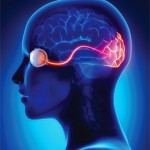
Howard Brody, MD, wrote an article for The New England Journal of Medicine calling on professional societies across medicine to create a list of things in their specialties that were very expensive but of limited use. The American Board of Internal Medicine Foundation teamed up other societies, including the American College of Rheumatology (ACR), and began the Choosing Wisely (CW) campaign.
“The whole point of CW is to get doctors to think about what the data show in terms of decision making instead of just reflexively ordering things because you can,” says Charles King, MD, senior rheumatologist with North Mississippi Health Services in Tupelo. “Every time you make a medical decision that is going to require the use of limited resources, you should make it a well-informed one.”
The ACR formulated and released its CW lists for both adult and pediatric patients in 2013. Since the program was started in 2012, more than 60 societies have joined the campaign. Although mainly published with those in that particular specialty in mind, many of the suggestions from other groups can also have an impact on the practice of rheumatology.
Rheumatologists can mine the lists from other societies and find practice gems, especially in areas not usually thought of as part of rheumatology practice.

Relevant Lessons from Others
“Some of the lessons from other areas of medicine can also be relevant to rheumatologists in their practices,” says Jinoos Yazdany, MD, MPH, assistant professor at the University of California at San Francisco and co-chair of the ACR task force that drew up the adult CW list. “Many societies address imaging for lower back pain in their reports. Suggestions on bone density testing are important to rheumatology. Many of our patients suffer from sleep disorders, making proposals on prescribing certain medications for insomnia in older persons something we should think about.”
One of the more consistent areas of interest is low back pain. The American Academy of Family Physicians (AAFP) noted that imaging for low back pain was not a good idea in the first six weeks without certain red flags. Similar suggestions were published by the American College of Occupational and Environmental Medicine (ACOEM) for injured workers with acute, unspecific low back pain. The American College of Physicians (ACP) also says doctors shouldn’t routinely obtain imaging studies for low back pain that can’t be attributed to a specific disease or abnormality. The North American Spine Society (NASS) argued against advanced imaging, such as MRI of the spine, for low back pain without red flags.
“The one common theme that we saw in the ACR’s Choosing Wisely list and many other campaigns is imaging, imaging, imaging,” says Dr. King. “There are a variety of reasons for this overuse, including liability issues and patient expectations.”
It’s very clear, especially when talking about low back pain, that the use of imaging without red flags, including neurological deficits or the suspicion of other underlying processes such as infection, are not cost effective and can cause harm. The impact can be great, just because the number of patients is so large.
“Low back pain is very common. About one in every four U.S. adults will have some experience with it over a three-month period, and rheumatologists are very likely to encounter it in clinical practice,” says Dr. Yazdany. “As many as half of all patients in some settings will receive imaging even though most guidelines recommend against it.”
Nuanced Decisions
Dr. Yazdany also notes that in many cases, the rheumatologist’s decision may not be quite as easy to make. Use of biologic or nonbiologic disease-modifying medications can increase the risk of infections in patients with rheumatic disease, and an immunocompromised state can sometimes be a red flag signaling that imaging may be appropriate.
“It is more likely that a patient seen by a rheumatologist may have the exceptions or red flags,” says Dr. Yazdany. “These lists are not to take the place of a clinical assessment and careful history and physical exam. When these concerns are found, appropriate imaging still needs to do be done.”

Another suggestion from the AAFP says that dual-energy X-ray absorptiometry (DEXA) should not be used to screen osteoporosis in women younger than 65 or men younger than 70 who have no risk factors. It is not viewed as a cost-effective test in younger, low-risk patients. However, the response to this may be more nuanced in rheumatology than in other specialty areas.
“The measure used by the AAFP is also consistent with what other national groups are considering,” says Ken Saag, MD, MSc, professor of medicine and director of the Center for Education & Research on Therapeutics of Musculoskeletal Disorders (CERTS) at the University of Alabama at Birmingham. “There are plenty of exceptions, and this is where this type of measure becomes challenging to the physician. We have a large number of people on corticosteroids, and they do need to be tested younger and more often.”
The American Geriatrics Society CW list says that physicians should not use benzodiazepines or other sedative-hypnotic drugs in older adults as a first-line insomnia treatment. They note high risks for motor vehicle accidents, as well as falls and hip fractures in these patients. Again, while it may not directly affect the practice of rheumatologists, there is a subset of patients for whom they need to keep this suggestion in mind.

“Sleep disorders are very common in patients with rheumatic disease,” notes Dr. Yazdany. “They will often bring this problem to our attention and ask for a medication to relieve the situation.”
There is a wealth of evidence in older patients showing that these kinds of medications can cause significant harm. Other options should be explored first.
A similar concern was brought up by the ACOEM’s suggestion that opioids should not be prescribed for either chronic or acute pain in those with safety-sensitive jobs, such as operating vehicles or heavy equipment. As with the benzodiazepine measure, this is an indirect concern that many rheumatologists may not have in the forefront of their decision-making process.
“Certainly in our practices we see people in pain from rheumatic diseases who operate heavy machinery or do similar work,” notes Dr. King. “Most rheumatologists know that we should use the lowest doses of these medications that are consistent with pain relief. I don’t think it is always on our radar to think about the special concerns with opioids in this particular population.”
From Under- to Overutilization
The overarching message from CW campaigns is that the focus of what constitutes quality has changed over the last decade or so.
“It is not really surprising that Choosing Wisely came along when it did,” says Dr. Saag. “There has been a traditional focus on underuse of medical modalities as a quality concern. What we are seeing now is an era of cost containment and a shift toward overutilization as a quality measure.”
Rheumatologists can mine the lists from other societies and find practice gems, especially in areas not usually thought of as part of rheumatology practice.
CW seeks out the top interventions and tests within different specialties that are of high cost and doubtful or little value. Dr. Saag notes that value is not just about cost, but has to do with how cost relates to value. There are very costly tests that still give important information. The key is finding those with high cost but little value and rooting them out.
“The other thing I would point out is that CW also brings home the point that we shouldn’t be ordering unproven diagnostic tests,” says Dr. King. “We need to think about pretest probabilities and how a test will help diagnostically instead of just ticking off a box on a computer’s order list. Often, tests are ordered as screening tests instead of in response to clinical indicators.”
Rheumatology’s Strong Suit
If anything, the consensus of the experts is that the concept of Choosing Wisely leads to what has always been a strong suit of the rheumatologist.
“These all call for a good history and physical exam, which we are very adept at doing, as an entry point to proper patient management,” says Dr. Saag. “Taking a careful history and an appropriate physical examination that then leads to doing the simple things before moving on to the more expensive tests will provide needed answers at lower costs.”
As the healthcare system changes, there will be a growing focus on how and when the more expensive interventions are used. This is a continuation of Dr. Saag’s discussion of the change in emphasis from underutilization to overutilization.
“This is a way for societies to begin to police themselves and maybe stop doing things just because they are easy,” he says. “In an era of worry about the tremendous costs of healthcare, it is incumbent on us all to do the best we can for our patients, but also be aware of the costs.”

Impact on Clinical Decision Making?
Each time one of the CW lists is released, concerns have been voiced about taking away some of a physician’s ability to make decisions based on the patient they see in front of them. CW’s website stresses that the recommendations “are meant to spur conversation about what is appropriate and necessary treatment. As [sic] each patient situation is unique, providers and patients should use the recommendations as guidelines to determine an appropriate treatment plan together.”
“The recommendations made by each society’s CW list are meant to foster communication between patients and providers,” says Dr. King. “They are not meant to be proscriptive. Ultimately, the decision to order a certain test or treatment rests with the provider.”
There is also agreement that the healthcare system of the future is one in which physicians communicate with each other across multiple specialties and areas of expertise. This will require increasing cooperation and coordination around common areas in guidelines and clinical recommendations.
“We should not be looking at Choosing Wisely lists as being in specialty silos,” says Dr. Yazdany. “They should be viewed as concerns that physicians will encounter independent of their practice situation. However, it is also important for doctors, patients and the public to realize that these are starting places and should not be viewed as static and unchangeable.”
Choosing Wisely is a way for specialties to weed out tests or other interventions that are widely used but are of dubious value. It should also be viewed as a method for rheumatologists to use the wisdom and experience of others in some of the indirect patient care decisions they make every day.
Kurt Ullman is a freelance writer based in Indiana.
Selected CW Recommendations

American Academy of Allergy, Asthma, and Immunology
- Don’t perform unproven diagnostic tests, such as immunoglobulin G (IgG) testing or an indiscriminate battery of immunoglobulin E (IgE) tests, in the evaluation of allergy.
- Appropriate diagnosis and treatment of allergies require specific IgE testing (either skin or blood tests) based on the patient’s clinical history. The use of other tests or methods to diagnose allergies is unproven and can lead to inappropriate diagnosis and treatment. Appropriate diagnosis and treatment is both cost effective and essential for optimal patient care.
- Don’t recommend replacement immunoglobulin therapy for recurrent infections unless impaired antibody responses to vaccines are demonstrated.
- Immunoglobulin (gammaglobulin) replacement is expensive and does not improve outcomes unless there is impairment of antigen-specific IgG antibody responses to vaccine immunizations or natural infections. Low levels of immunoglobulins (isotypes or subclasses), without impaired antigen-specific IgG antibody responses, do not indicate a need for immunoglobulin replacement therapy. Exceptions include IgG levels <150 mg/dL and genetically defined/suspected disorders. Measurement of IgG subclasses is not routinely useful in determining the need for immunoglobulin therapy. Selective IgA deficiency is not an indication for administration of immunoglobulin.
American Academy of Family Physicians
- Don’t do imaging for low back pain within the first six weeks, unless red flags are present.
- Red flags include, but are not limited to, severe or progressive neurological deficits or when serious underlying conditions such as osteomyelitis are suspected. Imaging of the lower spine before six weeks does not improve outcomes, but does increase costs. Low back pain is the fifth most common reason for all physician visits.
- Don’t use dual-energy X-ray absorptiometry (DEXA) screening for osteoporosis in women younger than 65 or men younger than 70 with no risk factors.
- DEXA is not cost effective in younger, low-risk patients, but is cost effective in older patients.

American Academy of Orthopedic Surgeons
- Don’t use needle lavage to treat patients with symptomatic osteoarthritis of the knee for long-term relief.
- The use of needle lavage in patients with symptomatic osteoarthritis of the knee does not lead to measurable improvements in pain, function, 50-foot walking time, stiffness, tenderness or swelling.
- Don’t use lateral wedge insoles to treat patients with symptomatic medial compartment osteoarthritis of the knee.
- In patients with symptomatic osteoarthritis of the knee, the use of lateral wedge or neutral insoles does not improve pain or functional outcomes. Comparisons between lateral and neutral heel wedges were investigated, as were comparisons between lateral wedged insoles and lateral wedged insoles with subtalar strapping. The systematic review concludes that there is only limited evidence for the effectiveness of lateral heel wedges and related orthoses. In addition, the possibility exists that those who do not use them may experience fewer symptoms from osteoarthritis of the knee.
- Don’t use postoperative splinting of the wrist after carpal tunnel release for long-term relief.
- Routine post-operative splinting of the wrist after the carpal tunnel release procedure showed no benefit in grip or lateral pinch strength or bowstringing. In addition, the research showed no effect in complication rates, subjective outcomes or patient satisfaction. Clinicians may wish to provide protection for the wrist in a working environment or for temporary protection. However, objective criteria for their appropriate use do not exist. Clinicians should be aware of the detrimental effects, including adhesion formation, stiffness and prevention of nerve and tendon movement.
American College of Occupational and Environmental Medicine
- Don’t prescribe opioids for treatment of chronic or acute pain for workers who perform safety-sensitive jobs, such as operating motor vehicles, forklifts, cranes or other heavy equipment.
- The use of both strong and weak opioids has been consistently associated with increased risk of motor vehicle crashes as opioids produce sedation and hinder or impair higher cognitive function. Evidence suggests higher risk with acute opioid use, but risk remains elevated throughout treatment with any opioid and reverses on cessation. Workers who operate motor vehicles/heavy equipment should be precluded from performing these or other safety-sensitive job functions while under treatment with opioids.
- Don’t initially obtain X-rays for injured workers with acute non-specific low back pain.
- X-ray is unnecessary for the initial routine management of low back pain unless red flags are present. Even when red flags are suspected, it should not be mandatory to order an X-ray in all cases. There is also no reason, either medically or legally, to obtain low back X-rays as a “baseline” for work-related injuries.
American College of Physicians
- Don’t obtain imaging studies in patients with non-specific low back pain.
- In patients with back pain that cannot be attributed to a specific disease or spinal abnormality following a history and physical examination (e.g., non-specific low back pain), imaging with plain radiography, computed tomography (CT) scan, or magnetic resonance imaging (MRI) does not improve patient outcomes.
American Geriatrics Society
- Avoid using medications to achieve hemoglobin A1c <7.5% in most adults age 65 and older; moderate control is generally better.
- There is no evidence that using medications to achieve tight glycemic control in older adults with type 2 diabetes is beneficial. Among non-older adults, except for long-term reductions in myocardial infarction and mortality with metformin, using medications to achieve glycated hemoglobin levels less than 7% is associated with harms, including higher mortality rates. Tight control has been consistently shown to produce higher rates of hypoglycemia in older adults. Given the long timeframe to achieve theorized microvascular benefits of tight control, glycemic targets should reflect patient goals, health status, and life expectancy. Reasonable glycemic targets would be 7.0–7.5% in healthy older adults with long life expectancy, 7.5–8.0% in those with moderate comorbidity and a life expectancy <10 years, and 8.0–9.0% in those with multiple morbidities and shorter life expectancy.
- Don’t use benzodiazepines or other sedative-hypnotics in older adults as first choice for insomnia, agitation or delirium.
- Large-scale studies consistently show that the risk of motor vehicle accidents, falls and hip fractures leading to hospitalization and death can more than double in older adults taking benzodiazepines and other sedative-hypnotics. Older patients, their caregivers and their providers should recognize these potential harms when considering treatment strategies for insomnia, agitation or delirium. Use of benzodiazepines should be reserved for alcohol withdrawal symptoms/delirium tremens or severe generalized anxiety disorder unresponsive to other therapies.
American Society of Hematology
- Don’t transfuse more than the minimum number of red blood cell (RBC) units necessary to relieve symptoms of anemia or to return a patient to a safe hemoglobin range (7–8 g/dL in stable, non-cardiac in-patients).
- Transfusion of the smallest effective dose of RBCs is recommended because liberal transfusion strategies do not improve outcomes when compared to restrictive strategies. Unnecessary transfusion generates costs and exposes patients to potential adverse effects without any likelihood of benefit. Clinicians are urged to avoid the routine administration of 2 units of RBCs if 1 unit is sufficient and to use appropriate weight-based dosing of RBCs in children.
North American Spine Society
- Don’t recommend advanced imaging (e.g., MRI) of the spine within the first six weeks in patients with non-specific acute low back pain in the absence of red flags.
- In the absence of red flags, advanced imaging within the first six weeks has not been found to improve outcomes, but does increase costs. Red flags include, but are not limited to: trauma history, unintentional weight loss, immunosuppression, history of cancer, intravenous drug use, steroid use, osteoporosis, age >50, focal neurologic deficit and progression of symptoms.
- Don’t perform elective spinal injections without imaging guidance, unless contraindicated.
- Elective spinal injections, such as epidural steroid injections, should be performed under imaging guidance using fluoroscopy or CT with contrast enhancement (unless contraindicated) to ensure correct placement of the needle and to maximize diagnostic accuracy and therapeutic efficacy. Failure to use appropriate imaging may result in inappropriate placement of the medication, thereby decreasing the efficacy of the procedure and increasing the need for additional care.
- Don’t use electromyography (EMG) and nerve conduction studies (NCS) to determine the cause of axial lumbar, thoracic or cervical spine pain.
- Electromyography and nerve conduction studies are measures of nerve and muscle function. They may be indicated when there is concern for a neurologic injury or disorder, such as the presence of leg or arm pain, numbness or weakness associated with compression of a spinal nerve. As spinal nerve injury is not a cause of neck, mid back or low back pain, EMG/NCS have not been found to be helpful in diagnosing the underlying causes of axial lumbar, thoracic and cervical spine pain.
- Don’t recommend bed rest for more than 48 hours when treating low back pain.
- In patients with low back pain, bed rest exceeding 48 hours in duration has not been shown to be of benefit.
For the complete list of recommendations, visit http://www.choosingwisely.org/doctor-patient-lists.
Compiled by Jessica Kinsella from the ABIM Foundation’s Choosing Wisely lists



